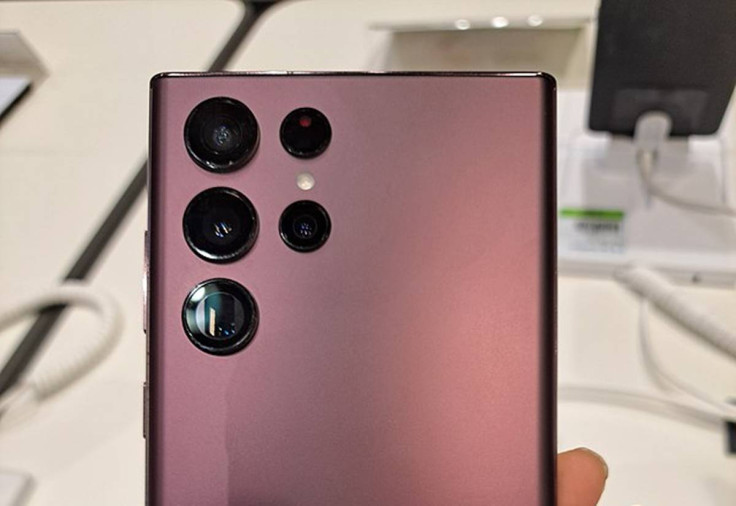Samsung Galaxy S26 Ultra Rumours: Shock Camera Downgrade, Huge New Bump and Return of 'Chip Lottery'
Beyond the renderings, current rumours point to powerful internal specifications

Could the next flagship phone from Samsung be taking a step back in one key area while surging forward in others? Reports are circulating that the highly anticipated Galaxy S26 Ultra could face a surprising camera downgrade, potentially offsetting a massive design change involving a new camera bump.
Add to this the possible return of the divisive 'chip lottery' that has frustrated fans before, and the picture becomes complex. Here is a look at all the latest whispers and leaks surrounding the Galaxy S26 Ultra.
Design Refinement: The Curvier Ultra
After providing the initial design leaks for the two smaller Samsung Galaxy S26 series handsets, Android Headlines has now returned with details on the flagship device: the Samsung Galaxy S26 Ultra.
Samsung Galaxy S26 Ultra CAD Renders Leaked!
— Rock Leaks (@rockleaks) September 30, 2025
Via:@OnLeaks#Samsung #GalaxyS26 #GalaxyS26Ultra pic.twitter.com/lMreOKC1NW
Just like the smaller phones in the series, the Samsung Galaxy S26 Ultra has been subject to an AH leak, featuring CAD-based renders. This final set of visuals shows exactly what the flagship device is set to look like, thereby concluding the current run of leaks for the Galaxy S26 series.
Galaxy S26 Ultra: The CAD Render Reveal
The publication has released three visuals of the handset. These detailed views, captured from various perspectives, reveal its design completely. Should the stills prove insufficient, AH has also released an accompanying clip, providing a complete 360-degree view of the device.
Although Samsung has clearly not made wholesale changes to the design, several features are certainly worth highlighting. The leaked renders and video show the Galaxy S26 Ultra retaining its signature flat display. Furthermore, it will incorporate the familiar, central 'hole-punch' cutout at the top of the screen for the front camera.
6000 nit peak brightness plus a better anti reflective layer and new privacy display is going to make the Galaxy S26 Ultra a monster in display pic.twitter.com/BqCt2pMyrS
— Anthony (@TheGalox_) October 2, 2025
The display will be framed by slim, symmetrical bezels. Furthermore, the device's corners have been gently rounded for improved ergonomics and a more comfortable grip.
Familiar Port and Button Arrangement
All the physical controls are once again located on the device's right spine. Following tradition, the power/lock key is situated beneath the volume rocker. The left side of the frame remains clear, with the SIM card tray housed along the bottom edge.
The phone's bottom edge will also host the main speaker grille and the USB Type-C charging port. Additionally, the dedicated slot for the S Pen stylus will be precisely situated in the device's bottom-left corner.
Turning to the back panel, the device will retain a quad-camera system, though the module's aesthetic will see a change. While the individual lens placement is expected to be similar, not all camera sensors will directly protrude from the rear glass.
On the left, a vertical triple-camera array will be featured, sitting atop a pronounced camera island that protrudes significantly from the back. This module is reportedly set to add 4.5 mm of thickness, resulting in a total peak depth of approximately 12.4 mm (on a chassis that measures around 7.9 mm).
An Asymmetrical Camera Design
The fourth camera, however, breaks this pattern. It will be positioned adjacent to the middle lens of the triple array, but will protrude independently direct from the backplate. This means it will not be enclosed within the main camera island with the other three sensors.
The more rounded Galaxy S26 Ultra feels like moving back to S20-21 days... no problem in that but we just lost the identity of Note completely.. Samsung should either revive the Note series to keep the legacy going on!
— Maaz Perwez (@MaazMz) October 1, 2025
The boxy design was the identity of Samsung flagship! pic.twitter.com/f3wIFPpFjs
The LED flash and an additional sensor cutout are also positioned separately, located above this fourth lens. Finally, the main surface of the device's backplate will be entirely flat, maintaining a clean aesthetic.
The device will feature an essentially flat frame, with only its extreme edges gently curving toward the front and back panels. This subtle contour is designed to enhance comfort and the phone's overall feel in the hand.
Processor and Performance
The device is slated to utilise the brand-new Snapdragon 8 Elite Gen 5 mobile platform. While Qualcomm confirmed the chip's existence at the Snapdragon Summit 2025 without naming specific phones, the Galaxy S26 Ultra is virtually guaranteed to be among the launch devices. As is customary for Samsung's top-tier flagships, it is highly likely to feature the customised, overclocked 'for Galaxy' version of the silicon.
The Dual-Chip Strategy Re-Emerges
However, the Snapdragon 8 Elite Gen 5 may not be the exclusive processor. Reports suggest that Samsung is planning to resurrect its dual-chip strategy, utilising its forthcoming Exynos 2600 chipset in select markets.
Historically, Samsung has deployed the Exynos variant extensively across Europe and parts of Asia, while reserving the Snapdragon version for key markets, including the United States and China. The distribution for the S26 series is expected to follow a similar regional split.
That chip split usually only applied to the base and 'Plus' models, though. The question now is whether Samsung will apply this dual-chip approach to its entire flagship line, including the Ultra. An Exynos version is a real possibility at this point. Up to 16GB of LPDDR5X RAM is expected, along with up to 1TB of UFS 4.0 or possibly even UFS 4.1 flash storage. The storage will not be expandable.
Charging Upgrade in the Cards
When it comes to the wired charging speed, rumours are conflicting. Some sources claim the existing 45W wired charging will be unchanged, citing regulatory listings. However, other often trusted reports are strongly suggesting Samsung will finally increase it to 60W wired charging, a long-requested upgrade for the Ultra line.
For wireless power, AH is holding out hope that the S26 Ultra's rumoured internal magnets will enable full Qi2.2 support, finally delivering a 25W maximum charging speed.
Out of the box, the S26 Ultra is expected to run on Android 16, topped with Samsung's own One UI 8 or 8.5. While the operating system will be new, the battery capacity is likely to remain unchanged at 5,000mAh, matching the Galaxy S25 Ultra.
Evolutionary Sensors and a Zoom Downgrade
In the camera department, the S26 Ultra is expected to maintain its quad-camera setup without a revolutionary sensor change. The main shooter remains a powerful 200-megapixel unit, featuring a bright f/1.4 aperture and a 1/1.3-inch sensor. This is paired with a 50-megapixel ultrawide camera.
Interestingly, one of the dedicated telephoto cameras may see a downgrade. Rumours suggest a new 10-megapixel unit (f/2.4 aperture, 1/3.94-inch sensor size, 1.0μm pixel size) with 3× optical zoom, which is physically smaller than the sensor used in the S25 Ultra.
However, the powerful periscope telephoto unit is expected to remain a 50-megapixel sensor with a 1/2.52-inch size, offering 5× optical zoom.
© Copyright IBTimes 2025. All rights reserved.





















